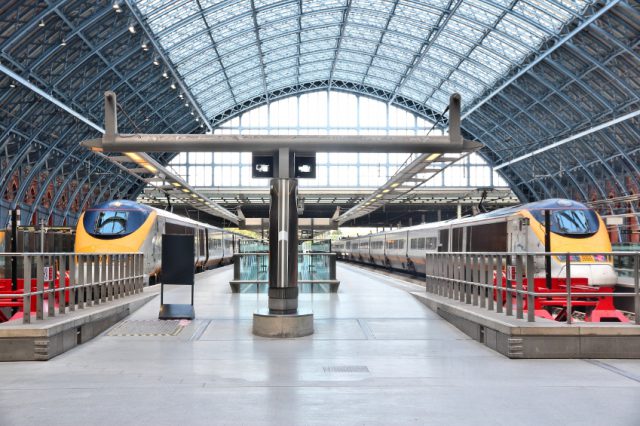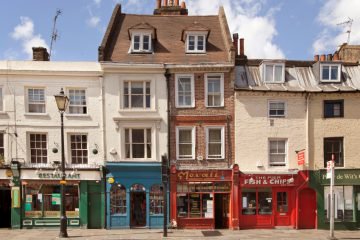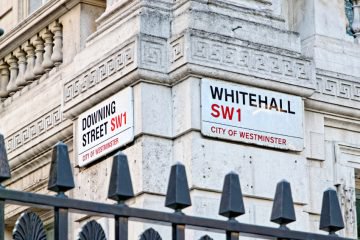Londoners priced out of the spiralling property market should move to Wellingborough in Northamptonshire, according to Lloyds Bank.
Lloyds has studied commuter towns to determine the most affordable places to buy a home within an hour’s commute of the capital.
Homes in Wellingborough sell for an average £160,245 compared to £722,000 in central London.
On average, those working in London that are happy to commute an hour each way save £450,000 on their house price, found Lloyds, although their annual season ticket costs almost £5,000.
Behind Wellingborough, Lloyds found that Kettering, Peterborough, Chatham, Luton, Basildon and Swindon are the most affordable commuter towns, where average property prices are all under £200,000.
Mario Bartella, owner of an estate agent in Wellingborough that shares his name, says that the town has experienced a significant rise in buyers priced out of London’s housing market, particularly those from North London.
He states: “I’d say three or four out of every ten sales transactions are people who used to live and work in London but now commute into town from here.
“I have got clients who have sold a one-bedroom flat in London, bought a four-bed detached house here and still had money left over.”
Most affordable commuter towns
|
Position
|
Town |
County |
Average house price
|
| 1 |
Wellingborough |
Northamptonshire |
£160,425 |
| 2 |
Kettering |
Northamptonshire |
£177,584 |
| 3 |
Peterborough |
Cambridgeshire |
£182,114 |
| 4 |
Chatham |
Kent |
£183,140 |
| 5 |
Luton |
Bedfordshire |
£186,752 |
| 6 |
Basildon |
Essex |
£194,260 |
| 7 |
Swindon |
Wiltshire |
£195,212 |
| 8 |
Sittingbourne |
Kent |
£202,915 |
| 9 |
Northampton |
Northamptonshire |
£206,087 |
| 10 |
Rugby |
Warwickshire |
£209,320 |

Priced Out Londoners Should Move to Wellingborough
Bartella says that London commuters often favour four-bedroom, detached houses on new built estates, located around a mile away from the centre of Wellingborough, where prices range from £225,000-£300,000. He says they usually use bicycles to travel to and from the station.
He adds: “It currently takes 50 minutes by train into St Pancras and it will be even quicker when a new non-stop train service starts next year.”1
For the average £160,245 house price, buyers in Wellingborough can find a three-bed semi-detached house with a garage or a good size Victorian terrace in the town centre. Bartella says they could even buy a small detached home.
Closer to London, house prices rise significantly.
Commuters with a 40-minute train journey into central London – including those living in Reading, Stevenage, Sidcup and Billericay – pay an average property price of £349,000. However, this is still £373,000 or 52% lower than the price of a home in London zones 1 and 2. An annual rail pass costs £3,499.
20 minutes away from the capital, commuters in towns such as Ilford, St Albans and Croydon can find a house that costs almost £321,000 less than in central London.
In some cases, commuters to central London can live in areas with higher average house prices than in the capital.
Those living in Beaconsfield pay an average property price of £921,516, with an annual rail pass of £3,788.
Nearby in Gerrards Cross, buyers pay an average price that is £32,525 higher than central London’s average.
The Lloyds research reveals that in other parts of the country, unlike the norm in London and the South East, commuters to some major cities pay more than if they lived in the city centre.
For those commuting to Britain’s second and third largest cities, Birmingham and Manchester, house prices are often more expensive outside the city.
The average house price in Birmingham is around £162,000. However, some towns with a 40-minute train journey away – including Walsall, Wolverhampton, Coventry, Burton upon Trent and Leamington Spa – have a higher average price of about £175,000. Commuters from these towns also pay an average annual rail pass of £1,900.
This is the same for some towns around Manchester, such as Warrington, Chorley, Huddersfield and Macclesfield, which have a higher property price of £168,000 compared to £151,330 in the city centre.
1 http://www.theguardian.com/money/2015/jul/28/priced-out-of-london-move-to-wellingborough-says-lloyds-report










